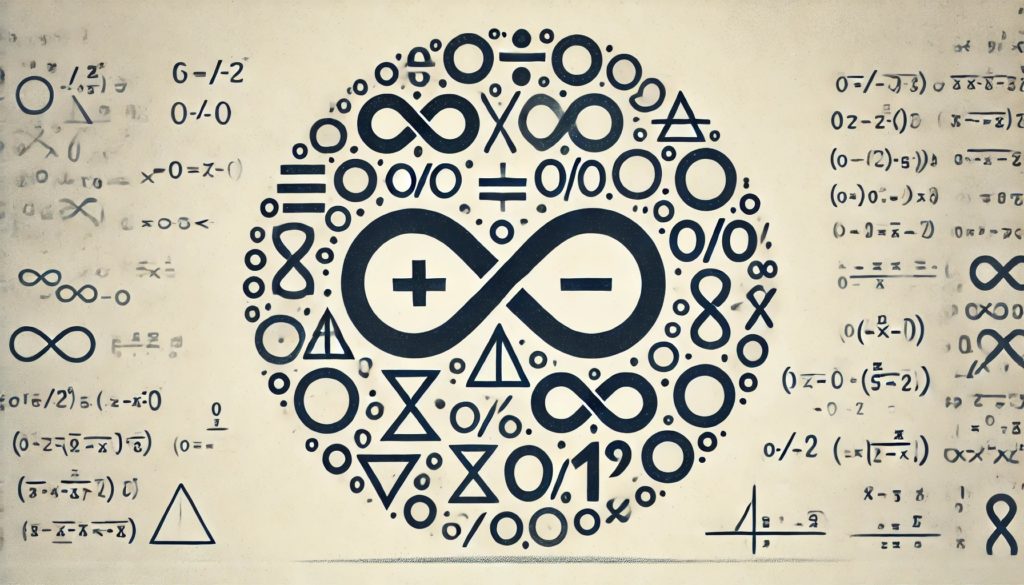This post is kind of a response to a question in the comments on the above YouTube video ( link to the comment ):
I don’t understand something and I need an explanation, why do you simplify “n”? I mean that n/n is an indeterminate symbol (infinity over infinity) help because I’m already lost with this
Understanding what indeterminate symbols REALLY are can be quite tricky. There are also many questions about what you “can” and “can’t” do with them.
A Quick Review
Let’s recall them first:

As you’ve surely heard many times with indeterminate symbols:
– The symbol ![]() doesn’t represent any “number” or any mathematical object, but it SYMBOLIZES diverging to infinity (infinity is not a number!)
doesn’t represent any “number” or any mathematical object, but it SYMBOLIZES diverging to infinity (infinity is not a number!)
– The symbol ![]() doesn’t represent the number
doesn’t represent the number ![]() , but it SYMBOLIZES converging to zero
, but it SYMBOLIZES converging to zero
– The symbol ![]() doesn’t represent the number
doesn’t represent the number ![]() , but it SYMBOLIZES converging to 1
, but it SYMBOLIZES converging to 1
– The indeterminate symbol ![]() doesn’t represent dividing some “number” by some “number”, but it SYMBOLIZES the situation where the numerator and the denominator diverge to infinity
doesn’t represent dividing some “number” by some “number”, but it SYMBOLIZES the situation where the numerator and the denominator diverge to infinity
– etc.
So, when we have to calculate the limit:

…we can say that we have an indeterminate symbol ![]() , because the numerator and the denominator in the expression are diverging to
, because the numerator and the denominator in the expression are diverging to ![]() .
.
In the expression ![]() we CAN’T “simplify” the infinity, because in the indeterminate expression, they don’t represent numbers that can be “simplified”, operated on, etc.
we CAN’T “simplify” the infinity, because in the indeterminate expression, they don’t represent numbers that can be “simplified”, operated on, etc.
In the expression  we also can’t “simplify” anything at the start, but not because of any formal reasons – but simply because nothing simplifies 🙂
we also can’t “simplify” anything at the start, but not because of any formal reasons – but simply because nothing simplifies 🙂
So we have to use some methods (in this case, pulling out the common factor – which I described in my Limits Course), work around it, etc.
But let’s take a trivial limit:

This is also a limit where we have an indeterminate symbol ![]() – because the numerator and denominator are tending to infinity.
– because the numerator and denominator are tending to infinity.
In the expression ![]() we also CAN’T “simplify” the infinity, but this time…
we also CAN’T “simplify” the infinity, but this time…
We CAN perform simplifications in the expression  .
.
‘n’ is indeed a mathematical variable on which you can perform arithmetic operations, simplify, etc. (unlike the symbol ![]() ). So
). So ![]() and everything is clean and legal.
and everything is clean and legal.
In Summary
You can’t perform arithmetic operations, simplify, etc., on the indeterminate symbols ![]() .
.
You can perform mathematical operations, simplify, etc., on expressions from which we calculate the limits of sequences and functions ![]() .
.
I hope I haven’t confused you even more, good luck with limits!


